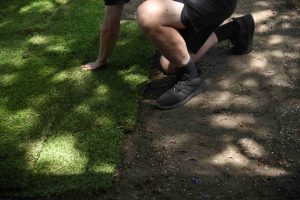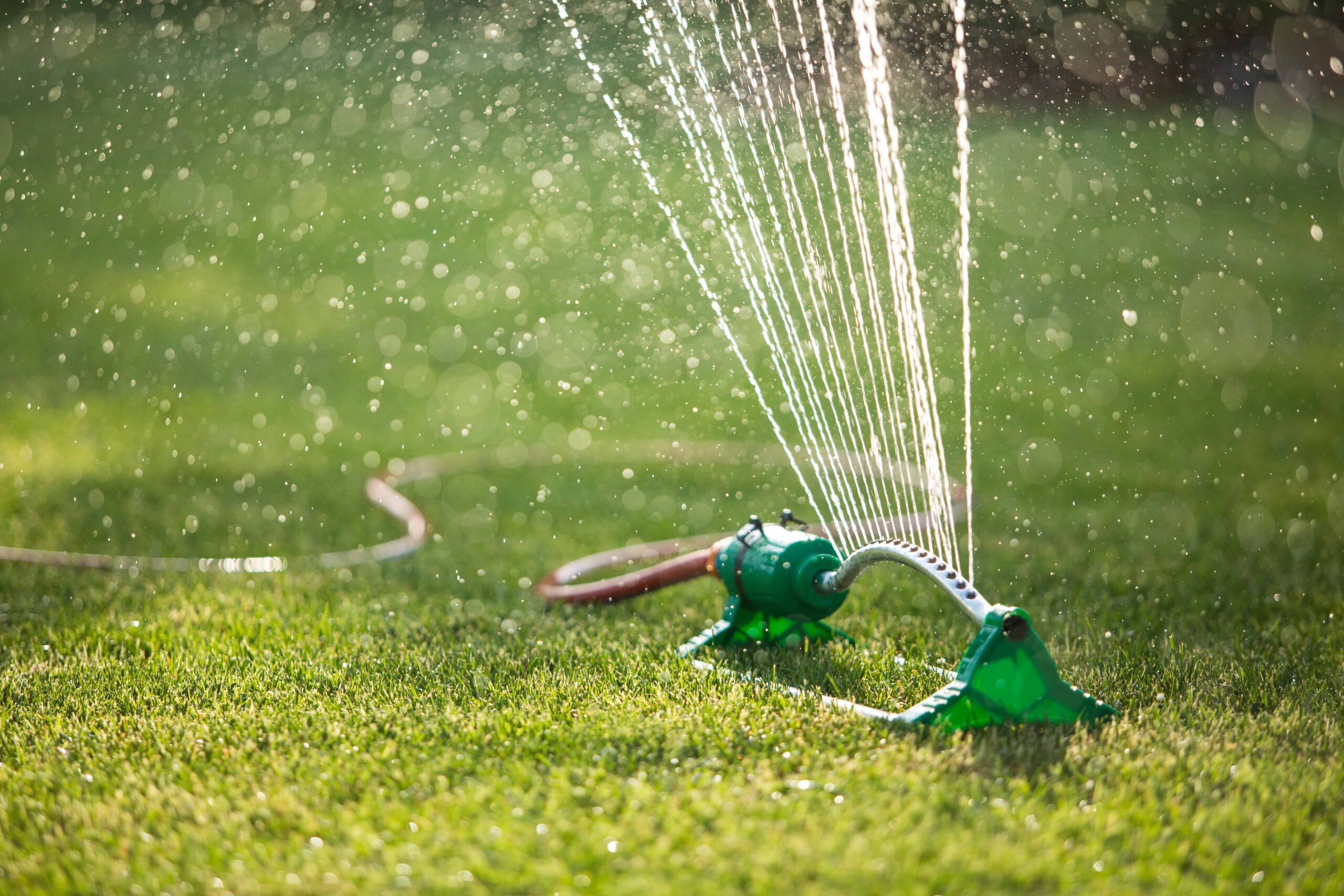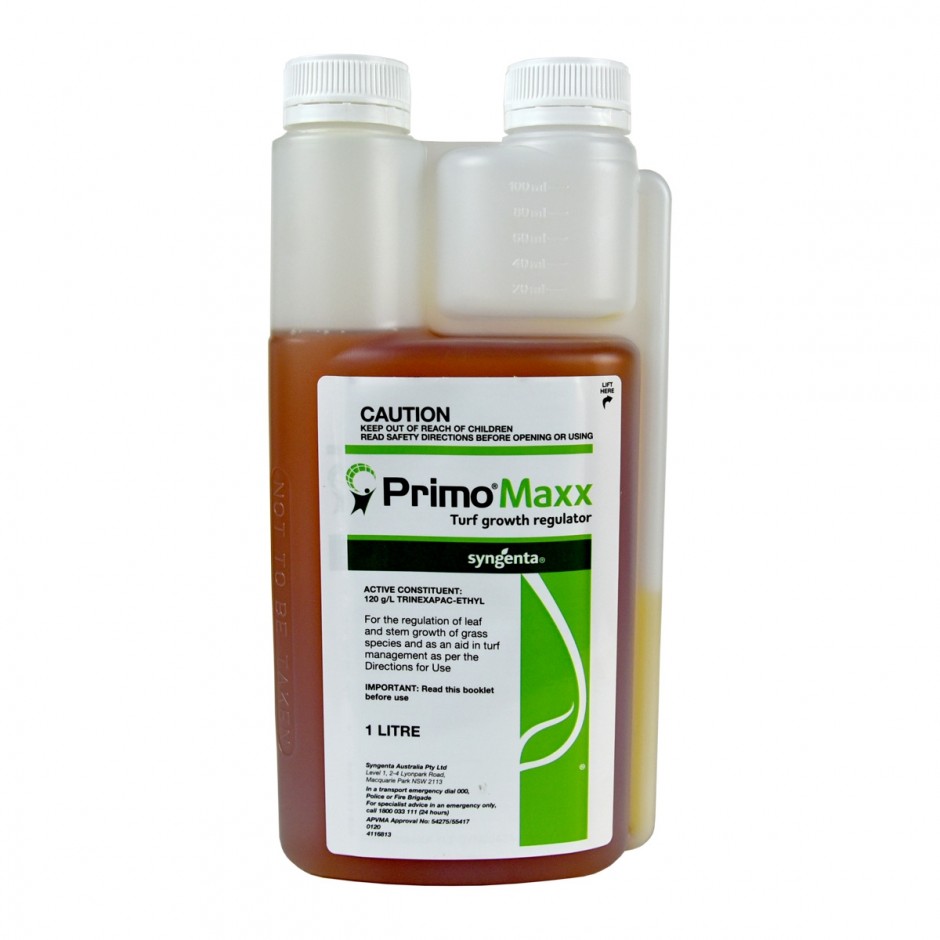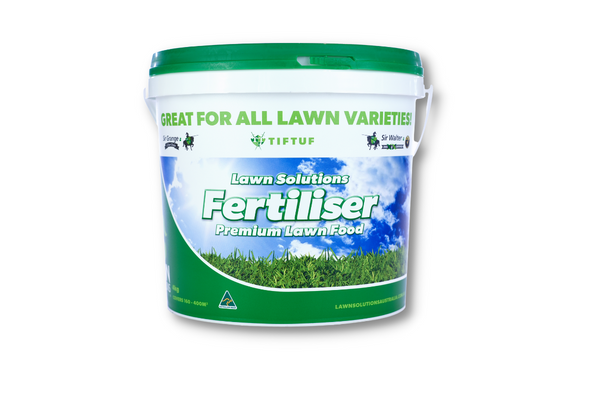How to Maintain TifTuf Hybrid Bermuda
Master Your TifTuf Lawn!
TifTuf Hybrid Bermuda has been taking the lawn industry by storm in recent years. It has superior drought tolerance and speedy recovery, and just like its name, it is tough and hardy. It is important to know exactly how to maintain your TifTuf lawn to ensure it can reach its full potential.

Before Installing TifTuf
With TifTuf’s self-repairing nature comes a prolific growth habit. This is ideal for a fast establishment with a root system that can take in less than 7 days, which can be up to 75% quicker than other varieties.
TifTuf’s naturally rapid growth ability means the use of Lawn Launcher Starter Fertiliser is only required at about half (1/2) or one-third (1/3) of the normal rate. This is because extra nitrogen will encourage too much leaf growth at a time when root growth is a priority. Furthermore, TifTuf has a high drought tolerance and overall lower water requirements once established compared to other warm-season turf varieties.
If you wish to use a pre-emergent herbicide as an extra preventative against future weeds, we recommend a product called OxaFert, which has low nitrogen levels. We stock OxaFert at our office in Jaspers Brush, or we can deliver this product with your turf delivery. OxaFert is best used during the two germination periods of early autumn (between March and April) and early spring (between September and October); our 3kg bag covers up to 150m2. However, OxaFert will protect your lawn for up to 3 months, so an application every 3 months will ensure your lawn is protected all year ’round. As a rule of thumb, apply OxaFert at the start of every season.
If you need help or advice on installing your new lawn, check out our installation guide here.

TifTuf During Establishment
Watering
While TifTuf uses very little water once established (38% less than other warm-season turf varieties), like all lawns, it will still need a good amount of water during the establishment period. The leaf and root system must be kept continually moist throughout establishment with 2-3 water applications each day. During hotter periods, this may increase. TifTuf can establish with a fraction of the water that most other varieties require, mainly due to its rapidly establishing root system.
We suggest closely following our Watering Guide for watering recommendations both during & post-establishment to ensure the success of your lawn.
*TIP: Use our Turfco Water Gauge to make sure your lawn is receiving the correct amount of water daily.

Your First Mow
It’s very important that you mow your new TifTuf lawn as soon as it establishes, approximately 2 weeks after installation (in peak growing season). Always ensure that the roots of the turf are firmly taken to the soil before mowing (established). To test this, gently lift a piece of the turf. If the turf lifts away from the soil with ease, the root system has yet to take to the soil beneath and requires more time to grow & establish. If there is resistance, the roots have established to the soil beneath, and the lawn is ready for use & its first mow. For TifTuf, mowing is required on a weekly basis in peak season. Regular and consistent mowing of TifTuf will prevent scalping issues and avoid extra maintenance.
With all turf varieties, the first mow of your new lawn should be light, on the highest setting. The aim with this initial mow is simply to take the top off and to begin encouraging more lateral growth.
Regular Care Of TifTuf
Ongoing TifTuf maintenance is fairly simple, thanks to its low input usage. The only thing to keep on top of is the length of the leaf.
Mowing
TifTuf likes to be mown approximately once a week, especially during the peak growing season of spring and summer. We recommend mowing TifTuf at a height of 10 mm to 30 mm.
TifTuf can be prone to the occasional scalp if your mowing regime is irregular. TifTuf is a fast-growing turf variety, so staying on top of your mowing maintenance, especially in peak growing season, is vital to ensure your TifTuf lawn doesn’t become overgrown. You could be away on a holiday, there may be an extensive period of rainfall, or you just don’t feel like mowing that week (we’ve all been there), all of which can lead to a couple of missed mows and a longer-than-preferred TifTuf lawn.
So, you will need to take care with your returning mow. Mow the area a few days apart (spaced intervals), taking no more than 1/3 (one-third) of the blade off in a single mow. Continue gradually reducing the height of your lawn until you reach your desired height. Doing so in this regime will ensure you keep your lawn green & healthy throughout the entire process. If you take more than 1/3 (one-third) off in a single mow, you will scalp your lawn, sending it into stress with a discoloured appearance. A consistent mowing schedule not only reduces the chance of accidentally scalping your TifTuf, it will also improve the overall look, health & performance of your TifTuf lawn. Frequent mowing encourages the turf to grow laterally in a tight-knit habit. TifTuf is very wear tolerant due to its self-repairing qualities, but encouraging a tight-knit growth habit through frequent mowing will only further improve its ability to handle high-traffic situations.
*TIP: If you prefer a finer look with the bowling-green stripe finish, we recommend mowing your TifTuf lawn 2-3 times a week.
Remember, we always recommend leaving the leaf slightly longer in length for the cooler months. And if you aren’t a fan of mowing, consider a Robotic Lawn Mower to assist you!

Our Top Tips For Mowing TifTuf:
- Never remove more than 1/3 of the leaf at any one time unless dethatching.
- If scalping occurs, do not lower the height of your mowing cut until leaf blade growth resumes.
- Mowing frequency can be reduced with controlled plant growth regulators (PGR), as per label rates (see more information below).
- Mowing too low will reduce turf density as will mowing too high.
- Rotary and reel mowers can be used, sharp blades are essential for rotary mowers as TifTuf is very soft and will tear if a blunt, slow mower blades will do the same.
- Ensure when double and triple cutting that you change directions.
- The best results are seen with a well-maintained reel mower.
- Mow a TifTuf lawn as soon as the roots are down and firm to promote lateral growth.
- Never scalp at temperatures over 30 degrees. A surface without green cover can reach over 50 degrees, and all surface material may die, and regrowth will have to come from subsurface rhizomes, slowing recovery.
Watering
TifTuf grows a deep root system that needs little water to thrive, so it is perfect for water restrictions and your water bill. Once established, TifTuf requires very minimal water inputs to maintain its green appearance. But the occasional watering (or as signs show) will keep it looking its best, especially during the summer season. Again, please refer to our Watering Guide for tips on how to best water your TifTuf lawn.
Plant Growth Regulators (PGR)
If you can’t mow TifTuf as regularly as you would like, a PGR like Primo Maxx can come in handy. Primo Maxx is a Plant Growth Regulator (PGR). PGR’s will suppress the lawn’s vertical growth, diverting its energy into lateral growth activist,y helping it to become denser. This will significantly reduce your required mowing frequency.

Tiftuf Fertilising Rates
TifTuf Hybrid Bermuda has been bred to require fewer inputs. For TifTuf, we only recommend fertilising the lawn twice a year, once in late spring and again in late autumn.
In the warmer summer months, fertilisers are often not needed at all for TifTuf lawns. Excessive fertilising with high amounts of nitrogen should be avoided.

TifTuf Performance
TifTuf In Shady areas
Although TifTuf is not regarded as a highly shade-tolerant grass, it is much more tolerant than comparable couch grasses. TifTuf can withstand areas of low light, needing only 4-5 hours of direct sunlight per day.
Important points on TifTuf in shady areas:
- TifTuf can be used in areas of medium shade.
- Be careful not to over water shady areas.
- Reduce traffic on lawn in heavily shaded areas where possible.
- Ensure there is at least 100mm of quality predominate sand turf underlay beneath the turf when laid.
Winter Dormancy
TifTuf Hybrid Bermuda is a warm-season turf variety. All warm-season turf varieties will enter a state of dormancy when [soil] temperatures decrease consistently (winter period). Expect your lawn to lose colour during these months as the plant growth rate slows down.
The extent of winter dormancy (colour loss) will vary subject to location, the severity of winter & the turf variety.
For example, most coastal suburbs with healthy lawns will experience low levels of colour loss during a normal winter. However, all warm-season turf varieties will lose most, if not all, colour during the cooler months in the Southern Highlands and the ACT regions.
An application of Lawn Solutions ColourGuard Plus* will immediately restore a lush, green colour to your lawn. The product will give your lawn an instant green look and protect the grass by keeping the blade up to 2 degrees warmer.
*Apply to established lawns only.
Once soil temperatures increase (generally mid-late spring), the plant growth rate will rise, and the lawn will return to its natural green state.
For more information, please feel free to contact us!



